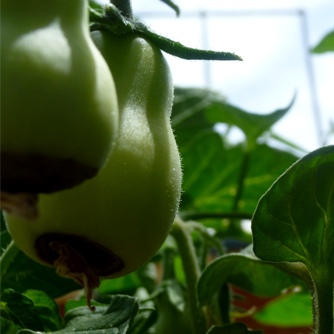-
Filter By Stock
- In Stock (0)
Blossom End Rot
Blossom end rot occurs when there is a lack of available calcium to the plant. This can be due to several reasons:
- Not enough calcium in the soil
- Enough calcium is present but locked up due to soil pH (too acidic or alkaline)
- Use of artificial fertilisers which provide excessive levels of other nutrients that are taken up at the expense of calcium
- Calcium is present but it’s only very slowly available to the plant eg powdered lime or crushed eggshells
- Fluctuation in soil moisture levels (eg drying out or being waterlogged) can restrict calcium uptake
- Periods of excessive growth where calcium goes to the leaves first at the expense of the fruit
Calcium shortage can also cause browning or dieback on the tips of leaves and petals.
Plants Attacked
Common on tomatoes, capsicums, eggplants, zucchinis, cucumbers and more.
Organic Control Methods for Blossom End Rot
Assess the above mentioned causes for calcium deficiency and take action as required:
- Boost the levels of readily available calcium by applying lime, dolomite or gypsum to beds at the beginning of each planting. A second application halfway through the season is recommended for heavy bearing crops.
- Test soil pH. If too acidic this can be quickly corrected by applyingeco-flo lime or eco-flo dolomite. If too alkaline apply sulphur or organic matter (like coffee grounds) but they do take time to work.
- Improve drainage in beds if water logging has been an issue.
- Mulch beds and provide regular deep watering during hot weather so that plants don’t begin to dehydrate.
- Only use organic fertilisers which don’t deliver nutrients in problematic forms eg as salts or at very high levels. We love digging in compost and manures at the beginning of each growing season and then topping up every fortnight with Eco-CWeed.
How do I choose between lime, dolomite and gypsum?
All three products are high in calcium and are useful for preventing blossom end rot. Lime and dolomite will also change soil pH and make it more alkaline. So if your soil is too acidic use lime or dolomite. Gypsum however does not change pH. If the soil pH is perfect (or already alkaline) then use gypsum. Soil pH can change over time so it is important to test it 1-2 times a year and make any necessary adjustments.
Choosing between lime or dolomite is easy. Dolomite contains a bit less calcium than lime but has the added advantage of containing magnesium. Use dolomite to get the magnesium boost unless you have extremely acidic soil when the extra calcium in lime will help correct this faster.

